Lenovo unveils the 13-inch Yoga Tablet 2 with Windows
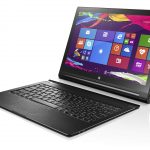
Lenovo makes some great computers; its laptop build-quality is legendary. While its tablet offerings have been average, the newest line of tablets is sure to change that. You see, the Yoga Tablet 2 line, has quite the impressive specs, which consumers should notice.
Earlier this month, the Yoga Tablet 2 Pro was the star of the show, when Lenovo unveiled the new line. The "Pro" tablet stood out, as it has a 13-inch screen, coupled with an impressive audio package, including a subwoofer. Unfortunately, the 13-inch tablet only came with Android, leaving Windows fans in despair. Fear not though, Lenovo has decided to right that wrong, and announces the 13-inch Yoga Tablet 2 with Windows.
Lenovo unveils Yoga 3 Pro, ThinkPad YOGA 14, Yoga Tablet 2 and Tablet 2 Pro
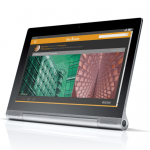
There are quite a few computer manufacturers nowadays, and many of them release products of varying quality. However, there is one that seems to consistently produce computers that are extremely well-built and functional -- Lenovo. Not only do the manufacturer's laptops and tablets have great build-quality, but the designs seem well thought-out and innovative.
One of my favorite product lines from Lenovo is Yoga -- multi-mode computers that can be transformed into different form factors. Today, the company unveils the Yoga 3 Pro, ThinkPad YOGA 14, Yoga Tablet 2 and Yoga Tablet 2 Pro.
Rise of Macs: Apple is the fifth-largest PC maker

The PC market is not what it once used to be. Both shipments and sales are in the proverbial toilet. Old devices are still adequate years down the road, and more than capable of running newer versions of Windows, if users wish to upgrade -- many don't. Other types of devices, like tablets, can do the basic tasks just as well, if not better than the PC, and, for many in emerging markets, smartphones are what they buy these days to connect them to the Internet.
There are other changes afoot as well. Thanks to the increasing popularity of its Macs, Apple, once known as a niche vendor with a limited appeal, now ranks as the fifth-largest PC maker worldwide, according to a new report from research firm IDC. How did it get here? Well, blame the lower prices, among other things.
IFA 2014: Lenovo unveils 8-inch TAB S8 tablet, touchscreen Y70 Touch, and ERAZER X315 gaming rig
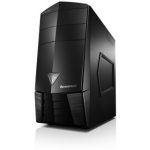
It's the first day of IFA2014 in Berlin, and Lenovo is getting all touchy feely. Rather than waiting until later in the consumer trade show, Lenovo has opted to display all of its wares right from that start by taking the wraps off three new devices, two of which feature touchscreens. As one of the devices is an Android powered tablet, this one is a given, but there's also a touchscreen laptop, and high-powered gaming rig to splash your hard-earned cash on. Priced at just $199, you may well be tempted to throw your money at the 8-inch TAB S8 with its sleek good looks and pretty impressive specs.
The display is a 1920 x 1200 affair boasting an ultra-thin bezel, and the whole unit weighs in at 299g. By way of illustrating the tablet's svelte dimensions, Lenovo has chosen to liken its thinness to that of a "standard pencil". Powered by a quad-core Intel Atom Z3745 processor running at up to 1.86GHz, the tablet also packs 2GB RAM, and 16GB of storage -- sadly not complemented with a microSD slot. The 4290mAh offers a claimed run time of up to seven hours and there are 1.6MP and 8MP cameras to take care of photos and videos. KitKat 4.4 comes pre-installed and there's an LTE option.
Lenovo introduces the EMC-based VNX5150 Storage Array

Lenovo hopes to put a smile on the face of penny-pinching small and medium sized businesses (SMBs) through a new storage area network (SAN) solution based on EMC's VNX unified storage family.
The Lenovo|EMC VNX5150 Storage Array is a dual-processor SAN that offers full redundancy for all major components as well as dual paths of connectivity throughout for a price that SMBs will be able to afford.
Lenovo Yoga 2: A decent budget hybrid [Review]
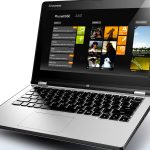
The Lenovo Yoga 2 is not to be confused with the Yoga 2 Pro. Although the basic principle of a notebook with a screen that flips over to turn the device into tablet is the same, the specification is markedly different. Just for starters, this is an 11.6in device rather than 13.3in -- but what's inside is much more value-oriented as well.
Instead of a processor from Intel's Core range, our Yoga 2 sample came with a Pentium N3520. This is part of Intel's Silvermount microarchitecture generation, in particular the Bay Trail-M family, which means it's actually from the same line as the Atom processor, despite the Pentium brand name. The N3520 has a nominal frequency of 2.166GHz, but a single core can rise to 2.42GHz in Turbo mode.
Smartphone market sees stiffer competition

The competition is heating up in the smartphone space, as, in Q3 2014, a dozen vendors have what it takes to shake up the top five smartphone makers list, according to a new report from research firm IDC. Judging by the standing from Q2 2014, the likely players in danger of losing their spots are Huawei, Lenovo and LG.
Samsung and Apple continue to be in a position of strength, with the two being responsible for 25.2 percent (74.3 million) and 11.9 percent (35.1 million), respectively, of the 295.3 million smartphones shipped in the quarter that ended June 30. That said, both lost market share compared to Q2 2013, when they claimed 32.3 percent and 13 percent, respectively, thanks to shipments of 77.3 million and 31.2 million units, respectively.
[Updated] Lenovo ends sales of small-screen Windows tablets in US due to lack of interest
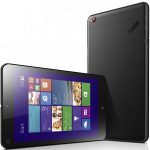
Microsoft is keen to get its tiled OS on as many devices, from as many hardware makers, as possible. It introduced the license-free Windows with Bing back in May as part of this push, but prior to that, at Build 2014, it announced it would be offering Windows for free to OEMs and ODMs on all tablets smaller than nine inches.
The dream of an army of smaller devices running Windows 8.1 has suffered a major setback now though with news that one of the largest Windows device makers, Lenovo, has decided to kill off its smaller tablets in the US, citing lack of interest.
Lenovo Yoga Tablet 10 HD+: Not your average Android tablet [Review]

Last year Lenovo extended its Yoga line to cover not just the company's rather clever folding hybrid Windows laptops, but Android tablets too. The designs weren't quite as ingenious as the IdeaPad Yoga, with its keyboard that flipped nearly 360 degrees to sit flat against the back of the display, but it still had a unique selling point (USP): A brilliant flip-out stand which could hold the tablet either tilted or upright.
It was a fabulous concept, but spoilt by a dated specification. The screen was a bog standard 1280 x 800 resolution effort, and the processor a lowly Mediatek quad-core CPU. Now, however, Lenovo has come back with the Yoga Tablet 10 HD+, enhancing the previous model with a full HD 1080p screen and a Snapdragon S400 SoC. Is this enough to make a great tablet from a great idea?
Lenovo preparing a Google Glass rival
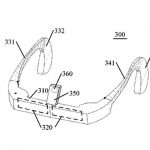
Chinese electronics giant, Lenovo, looks set to enter the wearable technology market after filing a patent for an "Electronic Device and Sound Capturing Method".
While the patent is careful to not use the word "wearable", perhaps to avoid any lawsuits with competitors, the images show a device that certainly bears a resemblance to Google Glass.
Lenovo Yoga 2 Pro: A good ultrabook that also works as a tablet [Review]
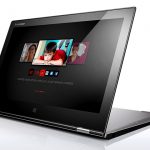
Lenovo seems to be hedging its bets in the exciting new world of tablet-Ultrabook hybrids. The company offers models where the screen is removable, like the ThinkPad Helix, and also where it rotates, like the ThinkPad Yoga. The Yoga 2 Pro is the latest non-corporate version of the latter. The basic concept is the same as the ThinkPad Yoga, but it moves the genre forward considerably in one key area.
The primary step forward is the screen, which has a whopping resolution of 3,200 x 1,800. This is even greater than the considerable 2,560 x 1,440 offered by Dell's XPS 11 2-in-1 Ultrabook, although the Yoga 2 Pro has a larger 13.3-inch display, like Toshiba's KIRA 101. It's an IPS screen, too, so doesn't suffer from the viewing angle issues of the cheaper TN variety, with the display clear from every position. Detail is superb, although colour is a little more muted than we would have expected.
Apple should be very afraid

Today's Moto E announcement demonstrates exactly what Lenovo sees in Motorola and illuminates one major reason why purchasing the cellular device company makes so much sense. The affordable phone, at $129 unlocked, targets people who have yet to buy smartphones, but own so-called dumb ones. They make up a huge market, much of it in Lenovo's backyard and largely ignored by Apple.
Smartphones accounted for 62.7 percent of mobile handset shipments during first quarter, up from 50.7 percent a year earlier, according to IDC. But as sales shift to smartphones they also slow in many mature markets, such as the United States where the install base nips 50 percent. Looking ahead, the higher-hanging sales will be the lowest-cost phones, where unlocked matters in many emerging markets, particularly Asia.
Lenovo thinks you will like its new products -- ThinkPad 10 and ThinkStation P300
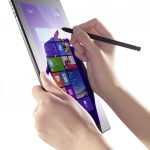
Windows devices and computers are a dime a dozen, but machines that truly shine are few and far between. While Microsoft's Surface line is wonderful, other manufacturers are quite hit and miss. With that said, Lenovo is one of the few companies that you can always depend on for high-quality Windows products.
Today, the manufacturer announces two beauties -- the ThinkPad 10 tablet and the ThinkStation P300. The tablet in particular is something Windows fans have been clamoring for, since the ThinkPad Tablet 2 has been getting very long in the tooth.
Lenovo announces N20 and N20p Chromebooks
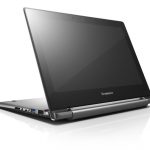
I think it safe to say that the Chromebook movement has exceeded all expectations. What first seemed like a silly Google experiment has blossomed into a legit Windows threat. As the average home user spends more and more time in the browser, Chrome OS becomes the perfect compliment to their lives. The stars definitely aligned for Google too -- a much maligned Windows 8 and poor economy made a low cost alternative laptop very attractive.
While many top manufacturers such as Dell, Acer and HP have created great Chromebooks, the world has been anxious to see Lenovo deliver a consumer model. After all, that company is synonymous with quality. Well, today is that day and the manufacturer has done it in epic fashion, by delivering two models. While the N20 ($279) is rather typical, the N20p ($329) is a multi-mode, touch-screen variant that has my heart aflutter.
Lenovo, LG have a 'me too' moment, also tell Ellen they have better smartphone cameras than Samsung

Ellen DeGeneres' Samsung Galaxy Note 3 made waves at the Academy Awards after being used to snap an on-stage selfie and a group shot. Both quickly became hugely popular photos taken at the event, and target practice for the South Korean maker's rivals.
Nokia was first to take a stab at Samsung for the terrible quality of DeGeneres' selfie, implying she should have used one of its smartphones instead. The photo posted by the star even had the #blurry hashtag added on Twitter to make up for what was basically a missed shot. Not to miss this opportunity (to be unoriginal), Lenovo and LG also took to Twitter to convince us that their smartphones would have fared better than Samsung's phablet.
Recent Headlines
BetaNews, your source for breaking tech news, reviews, and in-depth reporting since 1998.
© 1998-2025 BetaNews, Inc. All Rights Reserved. About Us - Privacy Policy - Cookie Policy - Sitemap.